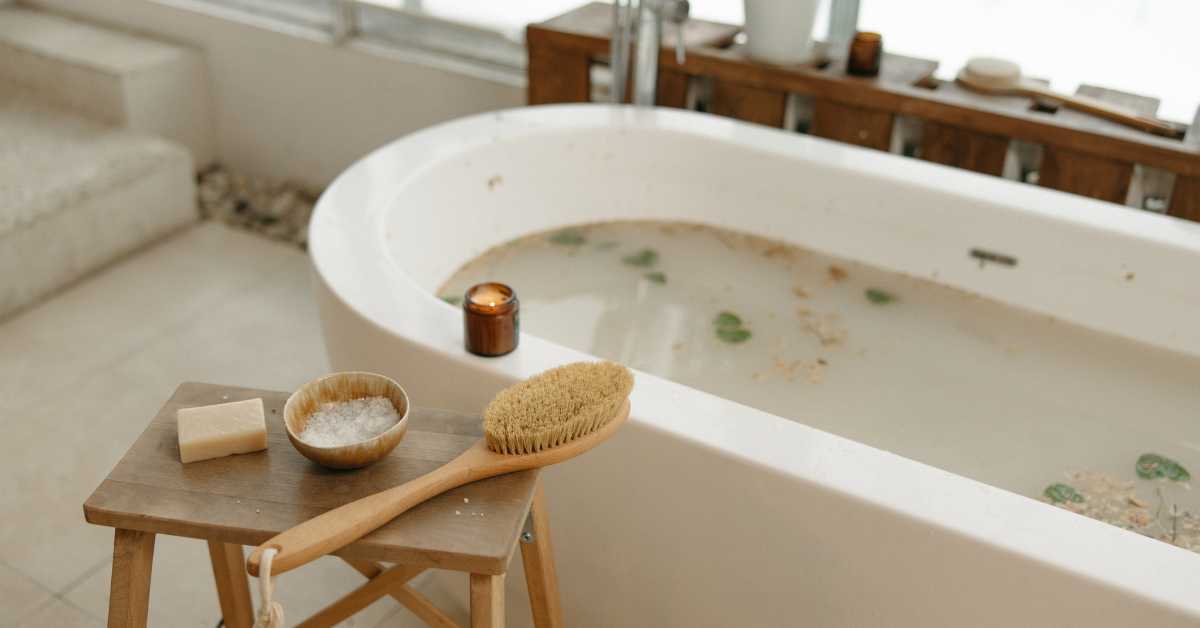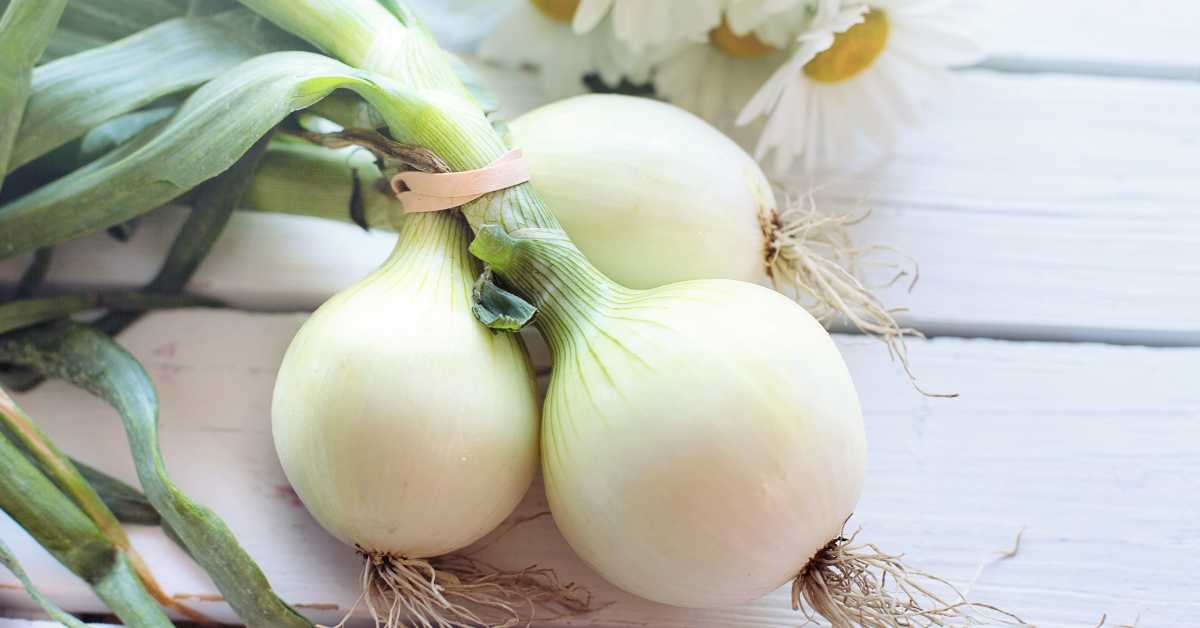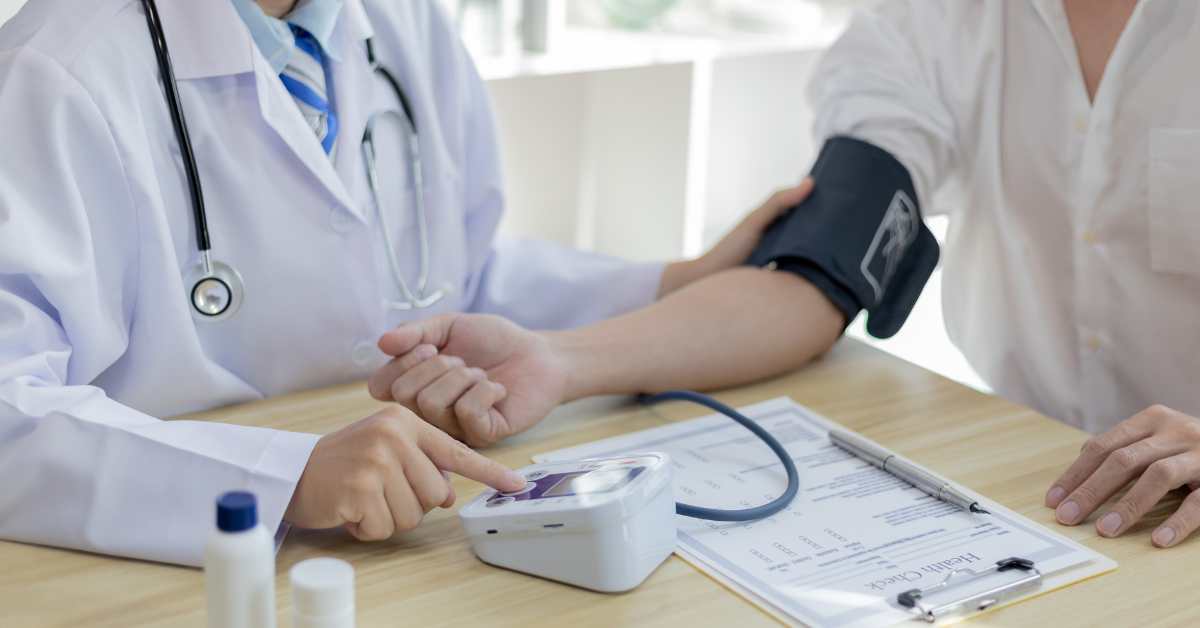Bentonite clay and Epsom salt are two naturally occurring skin soothing agents that go great together in a bath. This article describes the properties of bentonite clay and Epsom salt and gives instructions for making a therapeutic bath.
What Is Bentonite Clay?
Bentonite clay is a naturally occurring therapeutic clay created by the deposition and natural alteration of fine volcanic ash. It is a mixture of montmorillonite and other minerals; sometimes it is simply referred to as montmorillonite clay (1). Bentonite is special because it binds and draws out dirt and impurities, like toxic metals, viruses, and bacteria.
Bentonite has been used for a wide variety of other medicinal, cosmetic, and industrial purposes, including purifying face masks, gastrointestinal treatments, toothpaste thickener, industrial waste clean-up, water filtration, and more (1, 2, 3, 4, 5).
In my practice, I most often use bentonite clay in a skin-soothing cleansing detox bath with or without Epsom salt. Bentonite baths benefit skin health and draw out impurities.
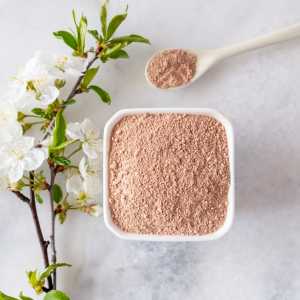
A drawback to bentonite clay, like any clay, is that it can be rough on the plumbing. To counteract this, I ensure that the bath water doesn’t have any clumps of clay in it and take a shower immediately after to clean my skin and flush the pipes. Bentonite clay is generally not recommended if you’re on a septic system that relies on a drainage field because the silt can cause a problem.
What Is Epsom Salt?
Epsom salt, aka magnesium sulfate, is made of magnesium, sulfur, and oxygen. Epsom salt has a long history of use in baths for muscle relaxation, pain relief, skin health, and overall healing (6).
Positive Effects Of Magnesium & Sulfur On Skin
Magnesium in the skin is important for skin barrier function, energy production, and overall good health. Sulfur in the skin is important for building healthy skin, managing inflammation, and breaking down keratin overgrowth in the outer layer of the skin (7).
The addition of bentonite to an Epsom salt bath may bind some of the magnesium ions; therefore, the skin healing effects of sulfur will be emphasized and complemented by the clay.
When To Use A Bentonite & Epsom Salt Bath
Bentonite & Epsom salt baths are something that I recommend in my practice for people dealing with inflamed skin conditions like eczema, acne, hidradenitis suppurativa, and psoriasis. I find the combination of bentonite and Epsom salt to be exceptionally soothing.
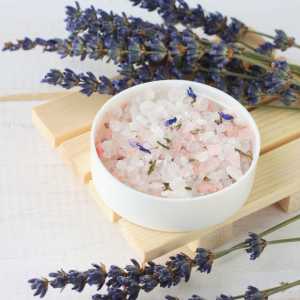 However, it’s important to note that every person’s skin is different. Even though many people find relief with bentonite and Epsom salt, it won’t be helpful for everyone and it may worsen symptoms. It’s important to start slow.
However, it’s important to note that every person’s skin is different. Even though many people find relief with bentonite and Epsom salt, it won’t be helpful for everyone and it may worsen symptoms. It’s important to start slow.
For more information about using baths for inflammatory conditions, see this article: Eczema Treatment 101 – Dr. Green Mom. For more information about Epsom baths and essential oils, see: How to Safely Prepare an Epsom Salt Bath With Essential Oils – Dr. Green Mom.
Epsom salt & bentonite clay baths can also be used as part of a detox protocol. Epsom salt gently promotes sweating, while bentonite binds and draws out impurities.
For more information about detoxification, see these articles: What Is Detoxification? – Dr. Green Mom and 10 Ways To Support Detoxification In Kids – Dr. Green Mom.
Bentonite & Epsom Salt Bath Instructions
Ages 8+ (for younger kiddos, cut the following amounts in half)
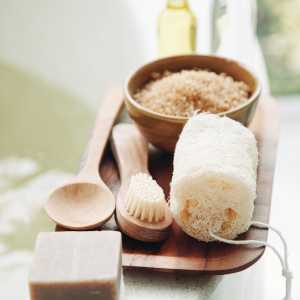 Ingredients:
Ingredients:
- 1/2 cup bentonite clay
- 1/2 cup Epsom salt
- Optional: 3-5 drops of essential oil (lavender, tea tree, rose, etc)
- Non-metal mixing bowl & wooden spoon*
*Non-metal because metal bowls and spoons will react with the bentonite clay making it less effective.
Mixing Instructions:
In a non-metal mixing bowl, add 1/2 cup of bentonite clay and 1/2 cup of Epsom salt to several cups of warm water and mix gently to dissolve clumps. Add to a full bath of warm water.
Bathing Instructions:
Relax in the warm bath for 10-20 minutes. Have a glass of water, electrolyte drink, or herbal tea nearby. After bathing, rinse off in the shower and be sure to rinse plenty of water down the drain. Apply moisturizer to prevent dry skin. This bath can be repeated 2-3 times per week.
It simply doesn’t make sense to do a skin-healing detox bath and then immediately “re-toxify” your skin by using products with unnecessary chemicals or inflammatory ingredients. If you’re looking for detox-friendly bath and body products, check out my non-toxic skincare line that includes body wash and moisturizer for kids, babies, and adults.
Modifications For Kids:
Children can also benefit from a bentonite & Epsom salt bath. The amounts listed above are appropriate for kids ages 8 and up. For younger children, the amounts can be halved (¼ cup of each bentonite clay and Epsom salt). Always monitor kids for water safety and to ensure they don’t drink the bathwater.
Premade Bath Bomb: Henry’s Homestead offers bentonite and Epsom salt bath bombs, which I love for their convenience!
Summary
Bentonite clay and Epsom salt are a great duo for a skin soothing therapeutic detox bath. It is a simple, effective, and natural remedy that can be made at home.
References:
- Bentonite | Earth and Atmospheric Sciences
- Srasra, E., & Bekri-Abbes, I. (2020). Bentonite Clays for Therapeutic Purposes and Biomaterial Design. Current pharmaceutical design, 26(6), 642–649. https://doi.org/10.2174/1381612826666200203144034
- Das, P., & Tadikonda, B. V. (2020). Bentonite Clay: A Potential Natural Sanitizer for Preventing Neurological Disorders. ACS chemical neuroscience, 11(20), 3188–3190. https://doi.org/10.1021/acschemneuro.0c00609
- Siddiqui, R., Khamis, M., Ibrahim, T., & Khan, N. A. (2020). Neuropathogens and Nasal Cleansing: Use of Clay Montmorillonite Coupled with Activated Carbon for Effective Eradication of Pathogenic Microbes from Water Supplies. ACS chemical neuroscience, 11(18), 2786–2788. https://doi.org/10.1021/acschemneuro.0c00539
- Babahoum, N., & Ould Hamou, M. (2021). Characterization and purification of Algerian natural bentonite for pharmaceutical and cosmetic applications. BMC chemistry, 15(1), 50. https://doi.org/10.1186/s13065-021-00776-9
- Rudolf RD. The use of Epsom salts, historically considered. Can Med Assoc J. 1917 Dec;7(12):1069-71. PMID: 20311026; PMCID: PMC1584988.
- Haftek, M., Abdayem, R., & Guyonnet-Debersac, P. (2022). Skin Minerals: Key Roles of Inorganic Elements in Skin Physiological Functions. International journal of molecular sciences, 23(11), 6267. https://doi.org/10.3390/ijms23116267
